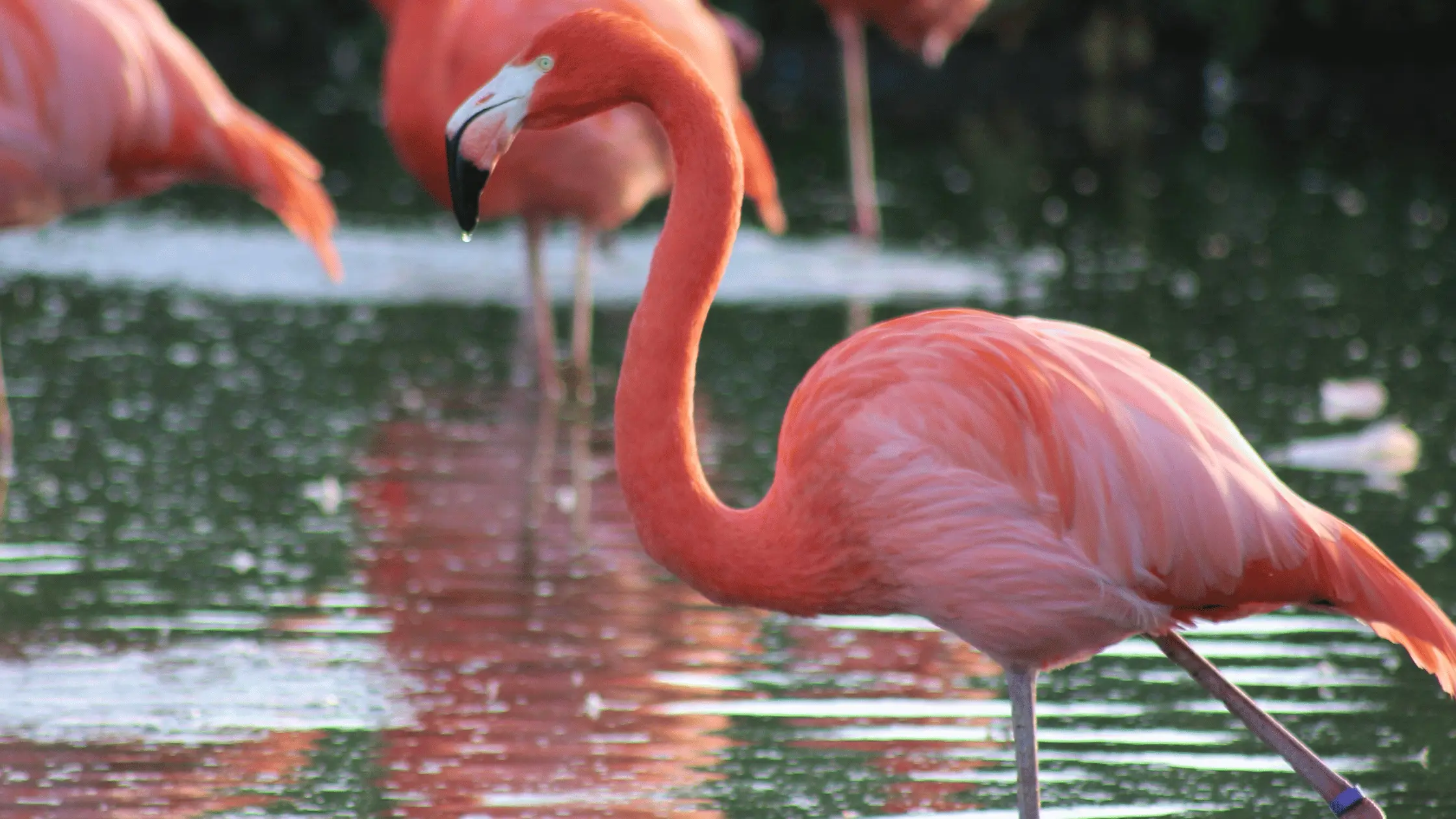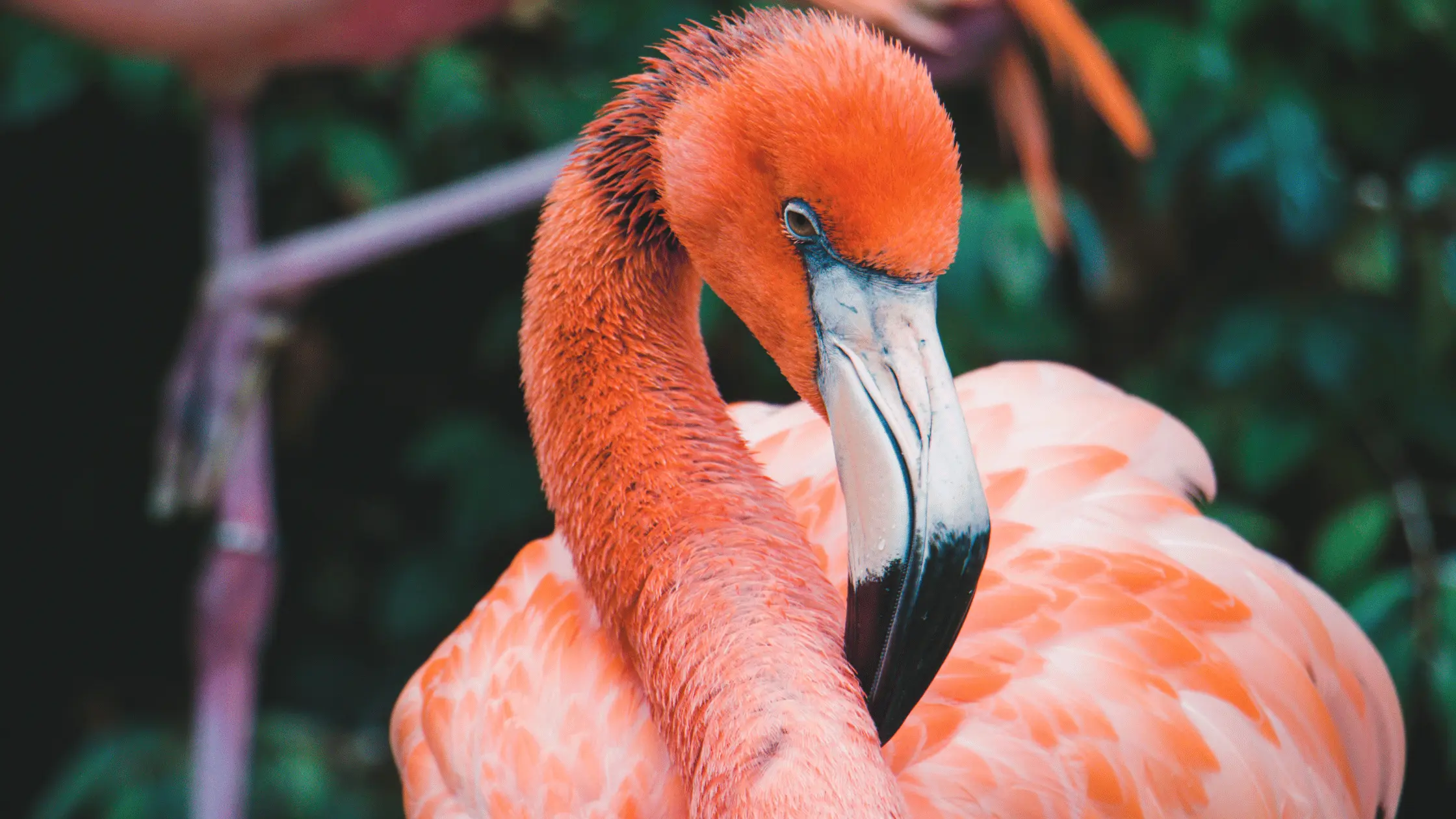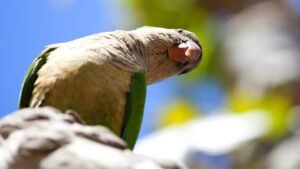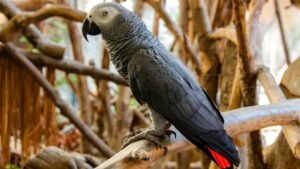Flamingos are a mix of fascinating and beautiful. They are beautiful, thanks to their pink wings and impressive long legs. They are fascinating because of their strange combination of features, including stilts-like legs and long necks. These funny combinations of features have led many to question the flying abilities of these birds.
The embers of curiosity around the flying abilities of flamingos are fanned by the fact that people hardly see flamingos in flight. So, do flamingos fly? Find out as you read on.
Flamingos: Can They Fly?

Yes, flamingos can fly. Do not be deceived by their looks; flamingos can fly up to 375 miles in one night. When they fly, they hit an average speed of 35 mph and fly 15,000 feet above the ground, which is relatively high if you ask me!
Even though flamingos can cover 375 miles in one night, they don’t come too close to long-distance flight birds such as swifts. Unlike birds such as eagles or owls, flamingos don’t need their flight to capture prey. Also, flamingos don’t need to flap their wings during flight like hummingbirds constantly. They soar with the wind when they fly, allowing their wings’ aerodynamics to function.
So why do flamingos have such skinny legs? You see, the flight of flamingos requires them first to gather a bit of momentum. That is where those legs come into play. Picture how a plane takes off; that is how flamingos begin their flight. Whether on land or water, flamingos need to run at full speed, wings flapping before they can lift off.
The greater flamingo is a big bird that weighs up to nine pounds. Despite the weight of the greater flamingo, it can still fly. Many people often think that the heavier the bird, the less likely it would be able to fly. However, the dynamics of bird flight are more complex than weight. For example, the wandering albatross can weigh up to 16 pounds with an impressive wingspan of 12 feet, yet they can fly. The wandering albatross can also travel up to 10,000 miles without landing.
The kiwi bird is small, yet many species cannot fly. So you see, the dynamics of why some birds can or cannot fly is more complex than you think.
Back to the flamingo. When the flamingo takes off, it not only runs but will stick its head forward and continue pedaling with its legs until it gains stability. When they are about to land, they also land, similar to how a plane does. The flamingo will begin slowing down as it loses altitude and vertically extends its legs like landing gear. When they finally touch down, it will involve long strides on the water or land before the flamingo finally stops.
When the flamingo is in the air, it will settle for a soaring flight to conserve its energy for the journey. They will stretch their heads as forward as possible and extend their legs behind them horizontally to maximize aerodynamics. The flamingo flies as high as 15,000 feet, almost at the same altitude that airplanes fly. Flamingos’ flying height is one reason bird watchers hardly spot them.
Flamingo Overview
Because many of you have never seen a flamingo, no thanks to them flying at nearly 15,000 feet, I wanted to give you a brief overview of what a flamingo looks like.
Flamingos are large birds identified by their long necks and pink plumage. They have stick-like legs. Flamingos are the true definition of the saying, “you are what you eat.” Flamingos turn pink when they eat pigments found in invertebrates and algae. The algae these long-necked birds eat are loaded with beta-carotene, an organic chemical containing a reddish-orange pigment.
There are six species of flamingos, with the greater flamingo being the tallest. Even though the greater flamingo is the tallest, it is still the most frequent flier among the species. The other five flamingo species are the lesser flamingo, Andean flamingo, Chilean flamingo, puna flamingo, and Caribbean flamingo.
The greater flamingo, the largest flamingo species, stands at 3.9 to 4.7 feet tall and weighs up to 7.7 lbs. Of course, the lesser flamingo is the short one among the flamingo species. The lesser flamingo stands at 2.6 feet and weighs 2.5 lbs.
Flamingos are incredibly hard to spot. But you stand a better chance of seeing them when they are still in the water. Since they are waterbirds, flamingos can be seen around lakes and lagoons. The flamingo lives in the northern part of South America, the West Indies, the Yucatan, and the Galapagos Islands. The greater flamingo can be found in the middle east and India, while the lesser flamingo is found in Africa.
Flamingos: Why Do They Fly?

If flamingo doesn’t fly to hunt prey and also aren’t migratory birds, then why do they even bother? Flamingos fly when they need to retreat to the water or when they want to travel short distances to another feeding site.
Flamingos don’t often fly because their situation doesn’t demand it, and this is because they have developed a feeding habit heavily dependent on their specific environment. Flamingos use their long legs to wade into deeper waters where predators such as lions can’t get to.
Flamingos are more likely to walk or swim than they are to fly. But when they need to fly, they will fly for short distances to relocate to areas with more plentiful food. Flamingos move into colonies, and they will seek out new territories together.
The Andean flamingo can live at heights of up to 10,000 feet, and the Andean flamingo lives that high when their lake habitats get frozen in the winter. Flamingos will usually not migrate for long distances. However, if they eventually migrate long distances, they will do so in large colonies.
When flamingos are about to fly, they will pick a clear night and choose a night with solid tailwinds because the winds will help them soar. Flamingos will fly at very high altitudes to avoid predators if they need to fly during the day.
Flamingos: Do They Fly in Formation?
Just like pelicans and geese, flamingos do fly in a V formation. This formation helps them to fly long distances. When the flamingo flies in formation, less energy is expended because each flamingo flies a little bit above the bird in front of them. This results in the reduction of air resistance from the wind.
When the flamingo is flying in their V formation, each bird will lead the flock, taking most of the wind resistance. When the leading bird has had enough, it will blend into the formation, allowing another bird to take the lead.
Flamingos will make a honking noise ( similar to geese) when they are flying in the V formation. The honking noise is likely to help keep the formation tight and organized. They bark orders to keep the formation close, just like soldiers do.
Flamingos: At What Age Do They Fly?
The flight feathers of baby flamingos are fully developed at 11 weeks; however, the baby flamingo will not begin flying until two weeks later. Also, adult flamingos fly with their babies but not for long distances because they need to get to full size before they can fly for long periods.
How Do They Keep Flamingos From Flying Away?
If flamingos are such good fliers, why don’t they fly away when they are kept in zoos? Good question. When flamingos are kept in zoos, their wings are clipped, or even worse, one pinion in the bird’s feather is surgically removed (more on this later).
The bird will be temporarily grounded when the flamingo’s feather is clipped. The bird’s feather will grow back in the successive molt, and clipping doesn’t put the bird in any pain.
Now, the following method is called pinioning. Thankfully, this method is used less today, but it still happens. Pinioning is cruel and, unlike clipping, causes pain to the bird, permanently grounding them. Pinioning is irreversible, meaning the removed phalange will not grow back.
Pinioning gets even crueler. Did you know that this procedure also reduces the speed of the bird? This is because the process messes up the balance of the bird. Pinioning may also hinder reproduction because it will cause the male bird many difficulties balancing itself during copulation. Thankfully, progressive zoos are beginning to do away with this horrific procedure, and I hope to pinion will soon be done away with completely.





